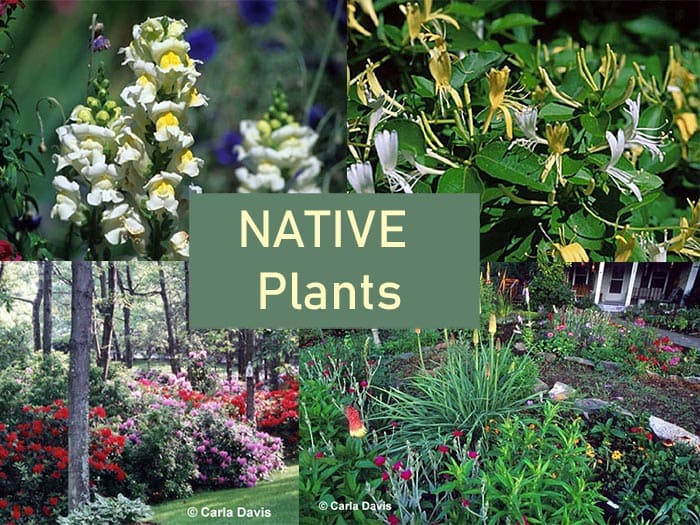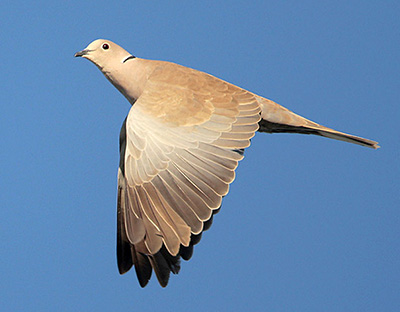
Nebraska Plants for Wildlife Habitat & Conservation Landscaping
Do you enjoy observing nature…hearing the song of the chickadee…watching hummingbirds fill up on nectar from trumpet vines…listening to the chattering of squirrels…seeing the beauty and grace of a monarch butterfly perched on a milkweed… experiencing the antics of a Mockingbird…the cooing of the Mourning Doves…the swiftness of the Cottontail…and the brilliance of a Cardinal or Baltimore Oriole?
If the answer is “yes”, you’ll probably want to landscape your property for wildlife so you can experience even more from Mother Nature by attracting more wildlife to your property.
Wildlife doesn’t just randomly appear in a given area. It is there because of favorable habitat. The essential elements that you must provide in your habitat are food, water, cover and a place to raise a family. To attract the most wildlife, you need native trees, shrubs, groundcover, vines and wildflowers, many of which will provide food and shelter.
Native or indigenous plants naturally occur in the region in which they evolved. They are adapted to local soil, rainfall and temperature conditions, and have developed natural defenses to many insects and diseases. Because of these traits, native plants will grow with minimal use of water, fertilizers and pesticides. Wildlife species evolve with plants; therefore, they use native plant communities as their habitat. Using native plants helps preserve the balance and beauty of natural ecosystems.
Remember the function served by plants and structures is more important than their appearance. In other words, don’t base your planting decisions solely on what a plant looks like. Following are WindStar Wildlife Institute’s plant recommendations for wildlife habitats in Nebraska:
Trees
Eastern Red and Northern White Cedar; Eastern White, Red and Norway Pine; Red, Silver and Sugar Maple; White, Swamp, Pin, Red, and Bur Oak; Shagbark Hickory; Hackberry; Redbud; Black Walnut, Eastern Cottonwood; Sycamore; Red Mulberry; Basswood; White and Green Ash; Ohio Buckeye; Horse Chestnut; River and Paper Birch;Cockspur and Downy Hawthorn; Persimmon; Green Ash; Honey Locust; Osage Orange; Black Cherry; Prairie Crabapple; Black Locust; Peach-leaved, Sandbar and Black Willow, Eastern Hemlock

In Nebraska, Doves are very commonly seen when you go bird watching.
Shrubs
Wild, Smooth and Illinois Rose; Black Raspberry; Highbush Cranberry; Elderberry; Pussy Willow; Silver Buffalobery; Bladdernut; Snowberrry; Coralberry; Low-bush Blueberry; Black Haw; Buttonbush; Swamp, Silky, Pogoda, Gray, Red- twig and Rough-leaved Dogwood; Wild Plum, Chokecherry; Aromatic, Fragrant, Staghorn and Smooth Sumac; Buffalo and Golden Currant; Serviceberry; Juneberry; Bush Honeysuckle; Winterberry; Sand Cherry; American Hazelnut;
Prairie Wildflowers
New England, Heath, Smooth, Aromatic, Sky Blue, Willowleaf, and Silky Aster: Buttonbush, Sweet Pepperbush, Spicebush, Swamp, Bluntleaf, Mead’s, Narrowleaf, Smooth, Common, Butterfly, Whorled, and Green Milkweed; Purple, Prairie, Blacksamson, Topeka, and Pale Coneflower; Grass Leaved, Stiff and Showywand Goldenrod; Wild Strawberry; Longflower and Smallflower Beeblossom; Prairie Fringed Orchid; Stiff, Woodland, False and Oxs-eye Sunflower; Spotted and Roundfruit St. John’s-wort; Dotted, Thickspike and Scaly Gayfeather; Cardinal Flower; Great Blue, Pale and Spike Lobelia; Horsemint; Beebalm; Common Evening Primrose; Prairie Phlox; Compass Plant; Black-eyed Susan; Blazing Star; Wild Lupine; White and Purple Prairie Clovers
Vines
American Bittersweet; Virgin’s Bower; Virginia Creeper
Grasses
Indiangrass; Big, Sand and Little Bluestem; Sideouts Grama; Switchgrass; Prairie Brome; Prairie Dropseed; Western Wheatgrass; Buffalo Grass; Canada Wild Rye; Junegrass, Blue Gramma; Bluejoint Grass; Bottlebrush Grass; Porcupine Grass
In the center of the continental United States, Nebraska is a land of plains; the Disected Till Plains in the eastern part of the state rise to the Great Plains in the north central and northwest parts of the state. The Disected Till Plains cover the eastern fifth of Nebraska. This area consists of rolling hills criss-crossed by streams and rivers. The Great Plains of Nebraska lie to the west of the Till Plains and extend across the state into Wyoming and Colorado. This area can be rough and hilly. A relatively flat area in the southeastern section, interspersed with lakes and wetlands, is farmed intensly. One might think of sand dunes as belonging near an ocean of one of the Great Lakes. But, north of the Platte River in central Nebraska lies the largest area of sand dunes in North America. Most of the sand in the so-called Sand Hills, is held in place by grass. Exceptions occur due to overgrazing of cattle and this is cattle country supported by streams and abundant well water. The Nebraska Native Plant Society can provide lists of local plants.
For more information on improving your wildlife habitat, visit the WindStar Wildlife Institute web site. On the web site, you can also apply to certify your property as a wildlife habitat, register for the “Certified Wildlife Habitat Naturalist e-Learning course, become a member and sign up for the FREE WindStar Wildlife Garden Weekly e-mail newsletter.

